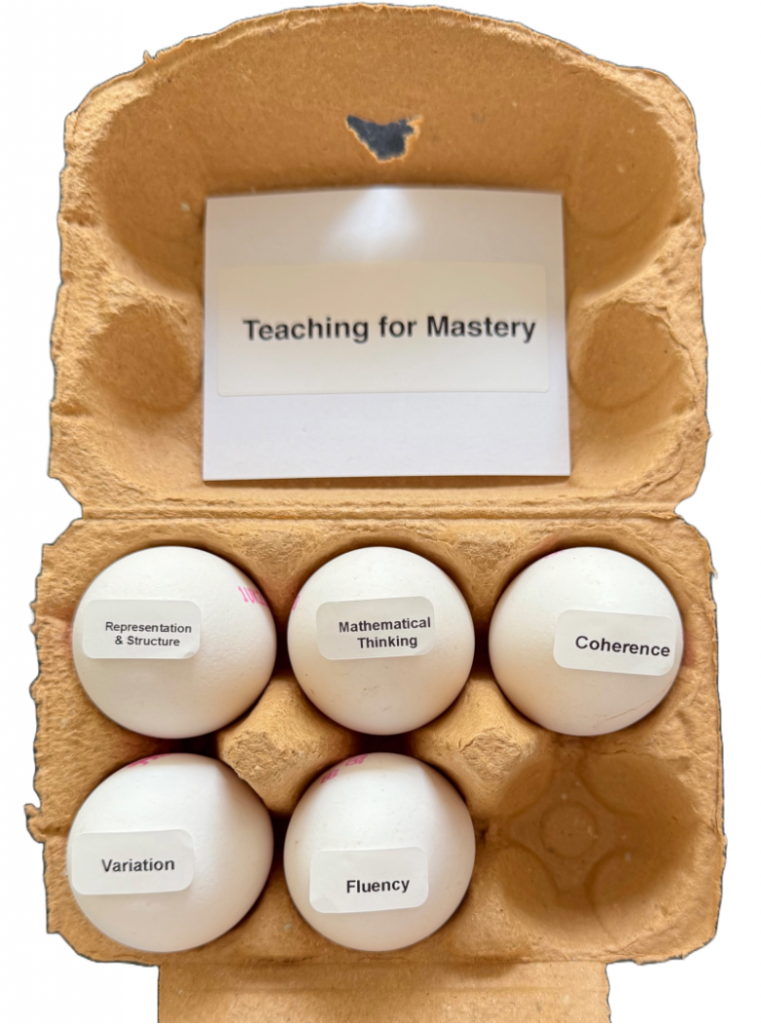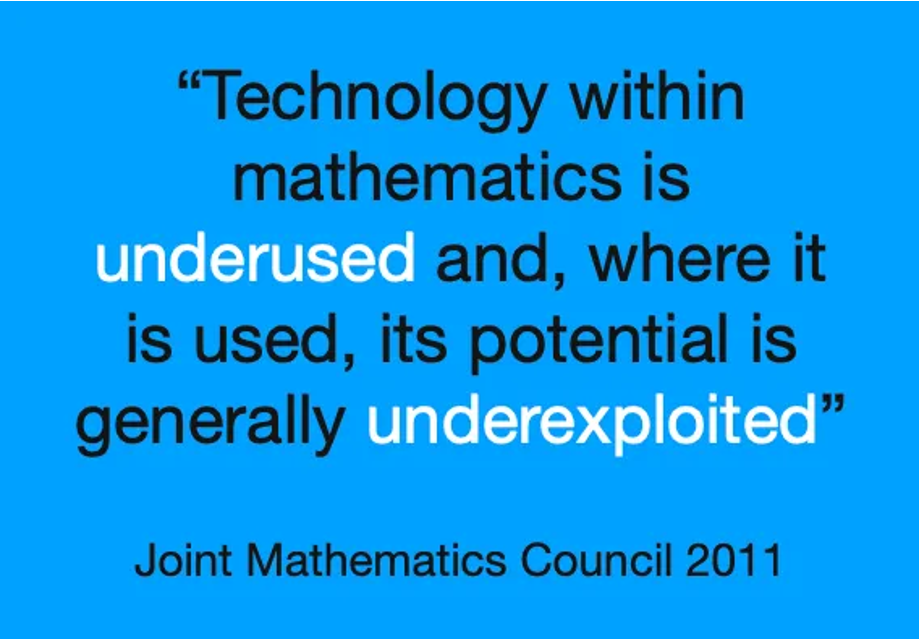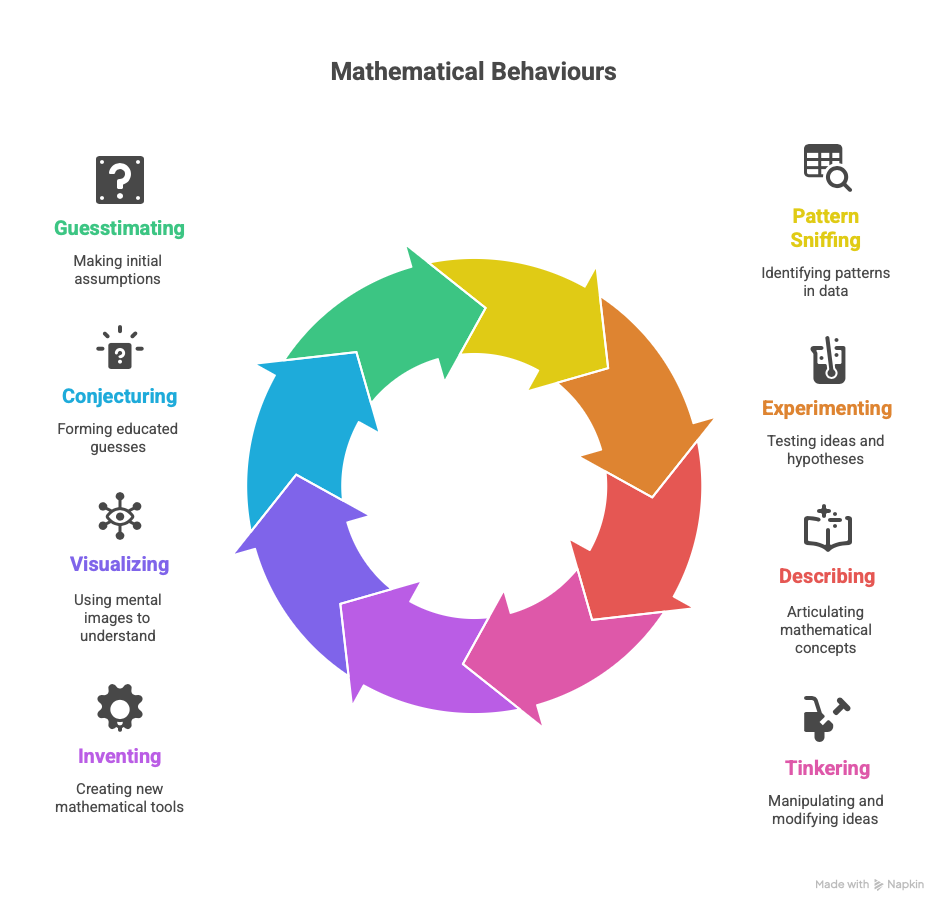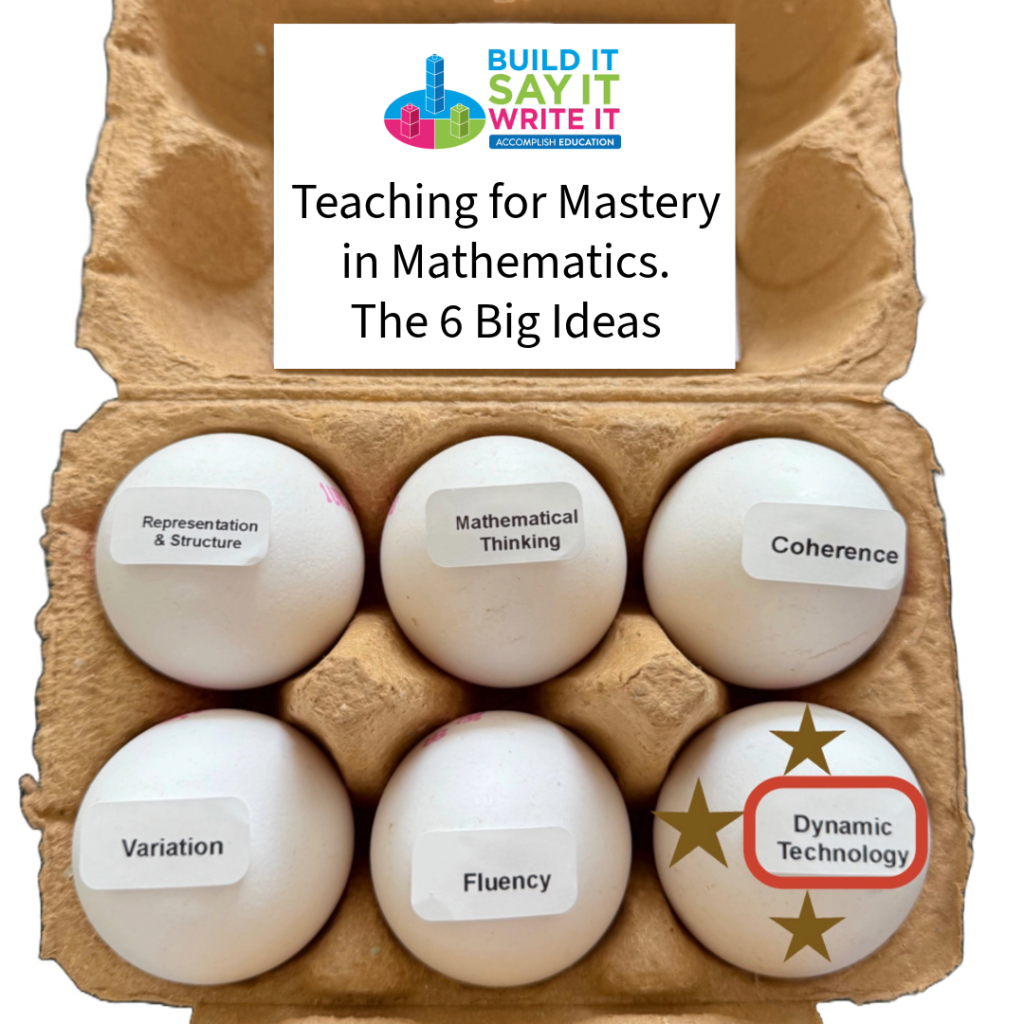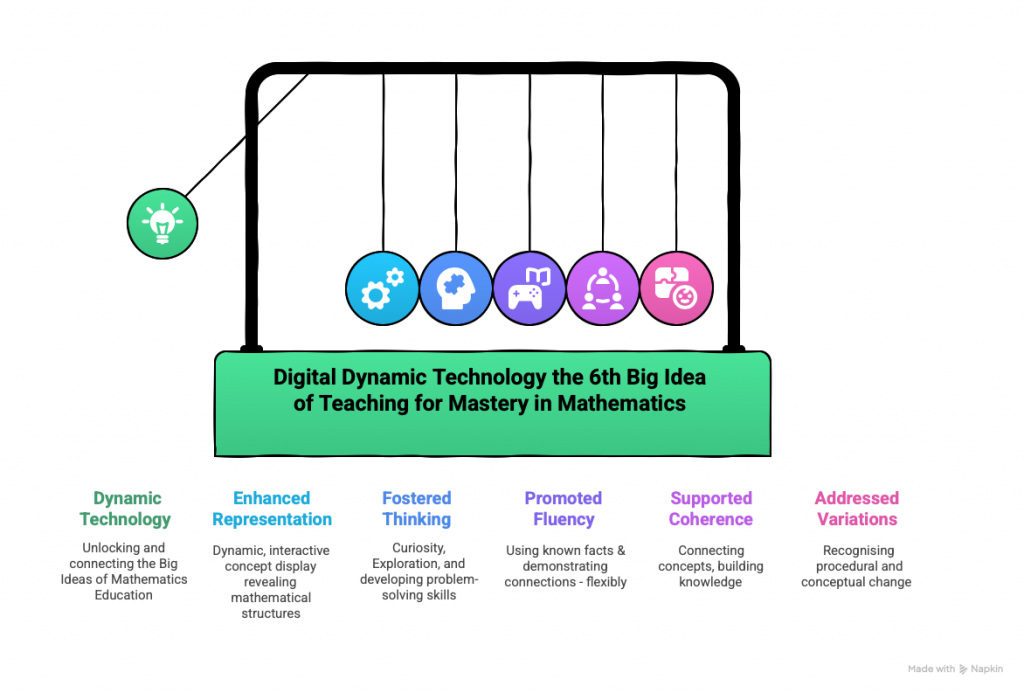Teachers should be aware of the limiting factors of PPT animations and their potentially restrictive impact on pedagogy and deep learning in mathematics.
Evidence from my small scale research of PPT based resources currently widely used by schools, showed examples of the number of ‘clicks’ needed in what was identified as an animated PPT slide deck for a single one hour lesson:
- Primary – 148 ‘clicks’ in 17 slides
- Secondary – 245 ‘clicks’ in 45 slides
Too frequently these PPT animations lead to direct instruction at the expense of developing children’s mathematical behaviours. The slide deck is set up to ‘flow through’ an idea and does not facilitate any live ‘in the moment’ responses to children’s thinking or questions.
Whereas, using dynamic technology there is every opportunity to respond to children with visuals to help them secure the understanding and even offer alternative representations.
Surely we want teachers to be asking children:
“What do you notice?”
“What do you think will happen when..?”
“What number do you want to try next”
as well as children being curious and asking:
“What if……”,
“Does it always work”
Using dynamic technology is about improved pedagogy where teachers are teaching not presenting, the focus is on the needs of the children and how the teacher can meet their needs, and should be included as a key element fin the DfE funded NCETM Big Ideas.!
Below are 2 approaches to the ‘teaching’ of ‘Perimeter of a rectangle’ one from a published resource and one I have created. Each video is less than 2 minutes, and for some readers, today could be the day you are enlightened to the potential of dynamic technology!
The Animated PPT approach
Children are watching a procedure being modelled but the animation does not embed the conceptual understanding of the perimeter being a measurement of length nor encourage children encouraged to develop their mathematical behaviours.
Slide 1
24 separate red lines appear, which may well be used for choral class chanting/counting, but will children be focusing on the sequence of counting numbers or recognising the red lines are meant to be representing a length?
Slide 2
Again the animated red lines are not showing lengths. Children are led to the fact opposite sides of the rectangle have the same value and sum to 24. The algorithm is correct.
Most importantly the children are not seeing the Perimeter as a measurement of length and evidence of its location on the rectangle, and they are only working with one example.
Now for the Dynamic Technology version.
The dynamic technology can be used Front of Class or on 1:1 devices.
As with any learning environment it is the teacher’s pedagogy that makes the difference to learners in classrooms, but with this dynamic technology there are visuals to support children of low prior attainment in their learning.
I would create the first rectangle to simulate the rectangle of tiles and the child stepping around them in the image, then encourage the children’s curiosity by asking children in the classroom:
What do you notice?
What rectangles shall we draw next?
What can you notice now and can you make any generalisations?
Does your generalisation always work?
The classroom experience being
You do, the children are invited to action and respond to the task provided
We do, the children and the teacher build up/draw together the finding on the mathematical concept
I do, the teacher refines the class findings to develop more sophisticated mathematical generalisations.
Using dynamic technology children can:-
- learn from feedback
- readily compare and contrast different representations
- pattern spot – explore the effects of varying values and look for invariance and covariance
- see connections in the mathematical structure
- visualise and work with dynamic images
Here is a simplified dynamic technology file you and colleagues can explore when teaching the perimeter of rectangles/shapes.
